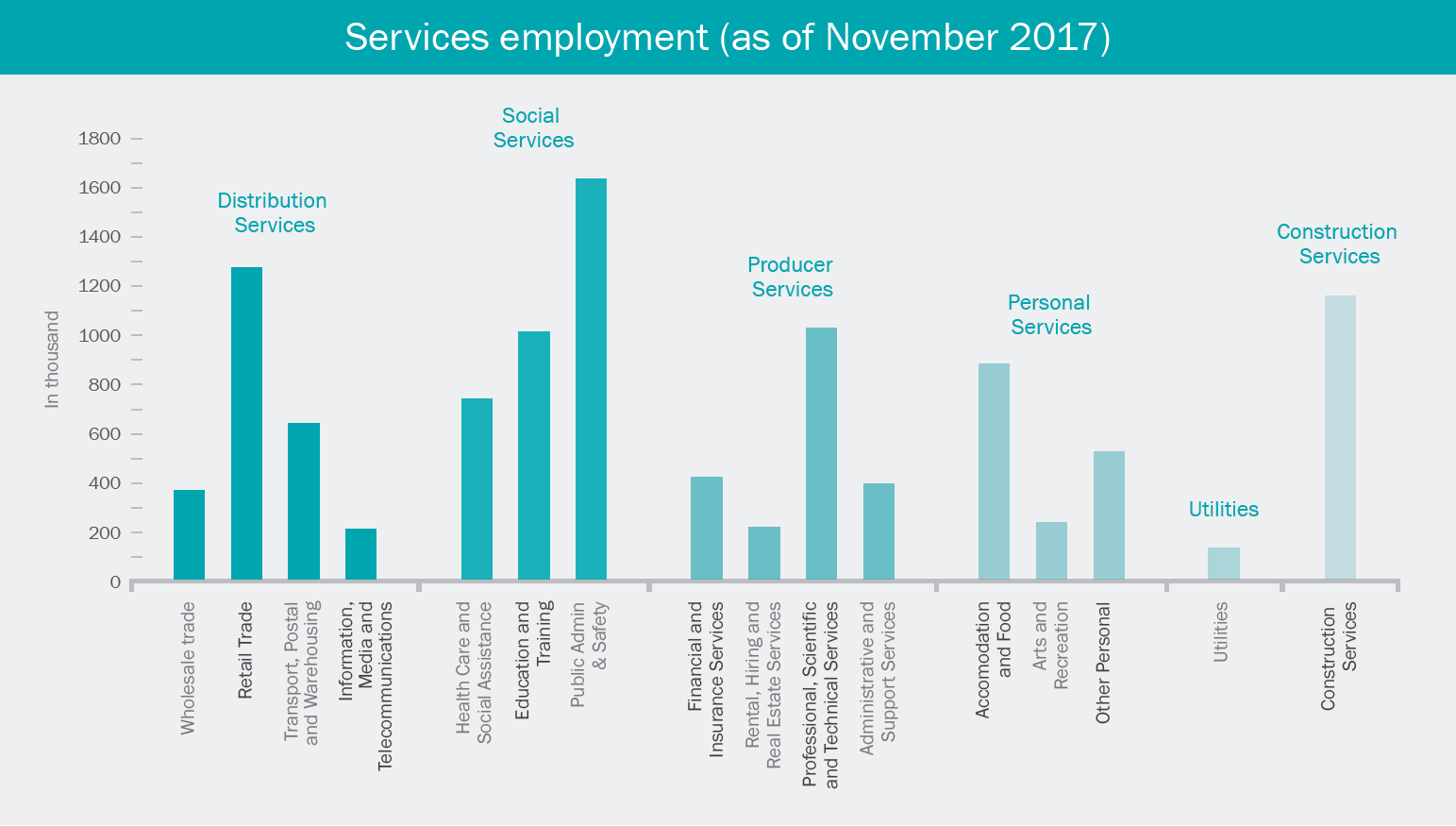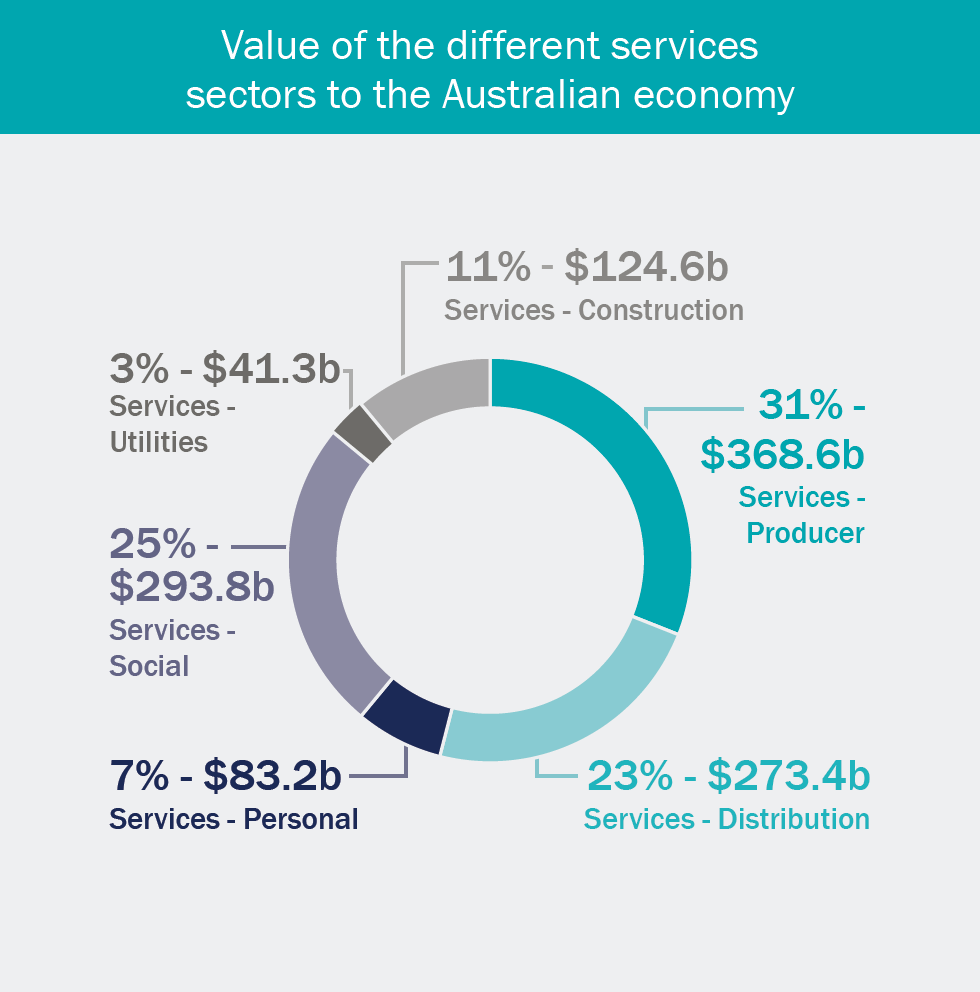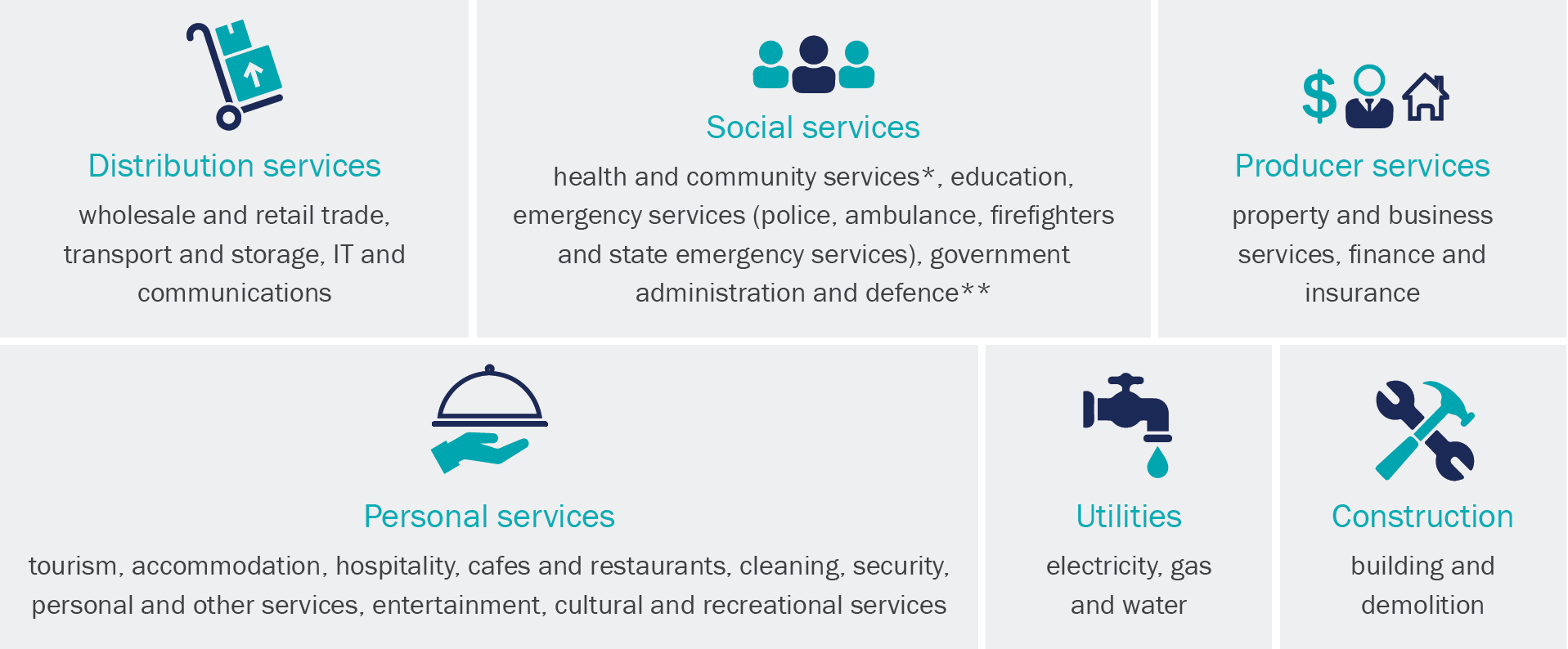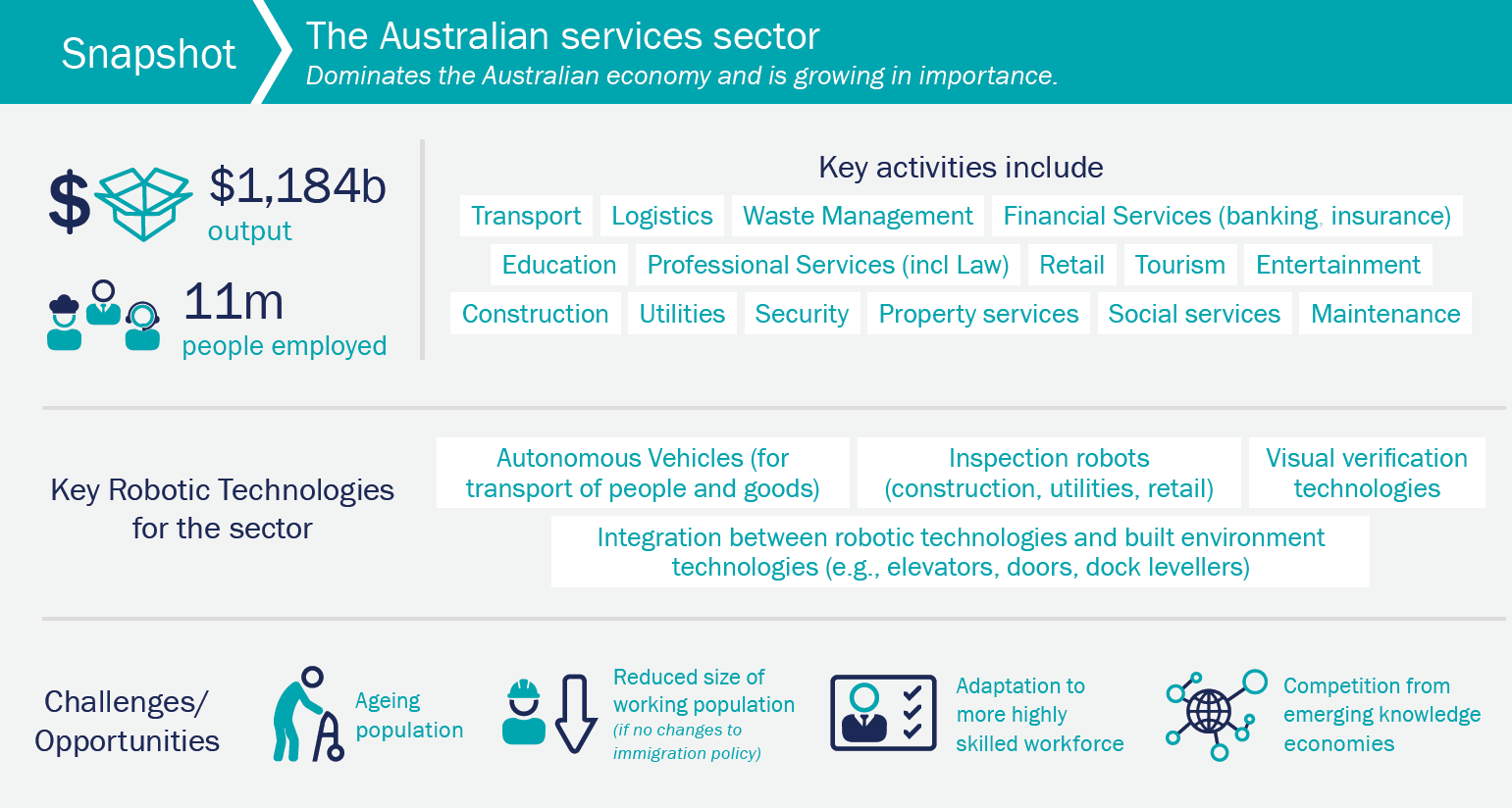
Australia’s services sector
Australia’s services sector is critical to its overall economy. The term ‘services’ applies to all activity in the Australian economy not directed at the production of ‘goods’. It covers a diverse range of utilities that is increasing in importance for our future wellbeing. In 2017, services represented 70 per cent of Australia’s gross domestic product (GDP), equating to an output of $AU1,184 billion [TR17]. Services also play an increasingly important role in our international trade, with services exports growing an average of 3.2 per cent per annum from 2010-2015, equating to 20 per cent of Australia’s total exports [DFAT16]. If the value of intermediate services is captured, services contribute 40 per cent of our value-added export earnings.
Services exports grew strongly in 2015–16, with Australia’s top service export — international education — growing by 9.4 per cent to be worth $AU19.8 billion [AIR16]. Most importantly, nine out of 10 Australian workers are employed in a services industry, accounting for more than 11 million people (88 per cent). Most of the increase in employment in Australia over the last fifty years (more than 7 million jobs) has been in the services sector [ASS00, POA06].
While primary (agriculture, mining) and secondary (manufacturing) economic sectors remain important to the Australian economy, the tertiary sector (services) is growing as Australia, like many developed nations, moves towards a knowledge-based economy. As the services sector grows, it has also contributed to more than half of Australia’s annual aggregate labour productivity growth [TR17]. Services provide essential inputs into virtually all goods and services that Australia produces. Therefore, the performance of the services sector has an important influence on the overall performance of the Australian economy, together with the international competitiveness of our industries. Further improvements to productivity in the services sector, by implementation of robotic and vision technologies for example, will have a major influence on our economy.

A key risk for services is the impact automation will have on employment. Over 85 per cent of Australia’s casual employees work in the services sector, which employs more than three-quarters of all low-skilled workers in Australia. In 2001, 91 per cent of low-skilled white collar workers, and 58 per cent of low-skilled blue collar workers, were employed in the services sector. While high-skilled workers predominate, the absolute size of the services sector means that it is also a major employer of low-skilled workers [ASS00]. Services were also responsible for all growth in low-skilled employment over the period 1986 to 2001 — an increase of about 7.5 per cent, or around 149 000 low-skilled jobs.
Although service jobs are concentrated in Australia’s capital cities, accounting for 85 per cent of the metropolitan workforce, service workers also dominate (75 per cent) employment in non-metropolitan regions [ASS00]. This suggests that any impacts on services jobs will have a widespread impact on the Australian community [DOJ17].

Future outlook for the services sector in Australia
Service robots have a key role to play in addressing societal challenges, such as demographic change, health and well-being, transport, and security, or more specifically, safeguarding human lives, protecting people from injury, and completing dangerous tasks such as lifting heavy objects (logistics). Like most developed countries, Australia’s population is ageing due to sustained low fertility and increasing life expectancy. This has resulted in proportionally fewer children (under 15 years of age) in the population and a proportionately larger increase in those aged 65 and over. This means that there will be fewer workers available in the future to take on many roles in the economy [CE17].
What industries are service industries?

Different services have a varying level of impact on the Australian economy (see facing page). The next sections, look at how robotic technologies have already infiltrated Australia’s services sector and what might be expected in the future. To do this, Australia’s services sector is divided into clusters of similar activities [ASS00] as above.
Definitions
Note the distinction between the services sector of the economy and the term ‘service robots’, which describes a relatively new class of non-industrial robots that perform useful tasks for humans or equipment. Robots are often broadly termed either ‘industrial’ or ‘service’ robots. The first robots deployed in manufacturing in 1961 were industrial robots. They are highly specialised, automatically controlled machines that can be reprogrammed, and can be classified according to the number of axes – three, four, five, six, or more. Service robots are a recent phenomenon, apparent only since the 2000s, and yet their numbers are now far outstripping those of industrial robots (International Federation of Robotics 2017 [IFRSR17]). Service robots may be distinguished according to the scale at which they are used. Service robots that help individuals or households are called ‘domestic’ or ‘personal’, or sometimes, ‘consumer’ robots, while robots that operate on a larger scale, e.g., helping in a warehouse, are called ‘industrial’, ‘commercial’ or ‘professional’ service robots.

